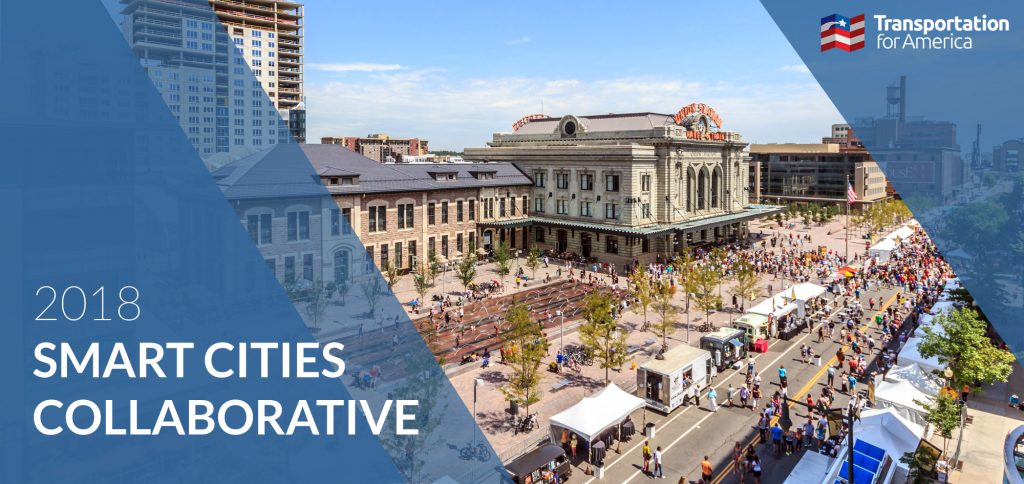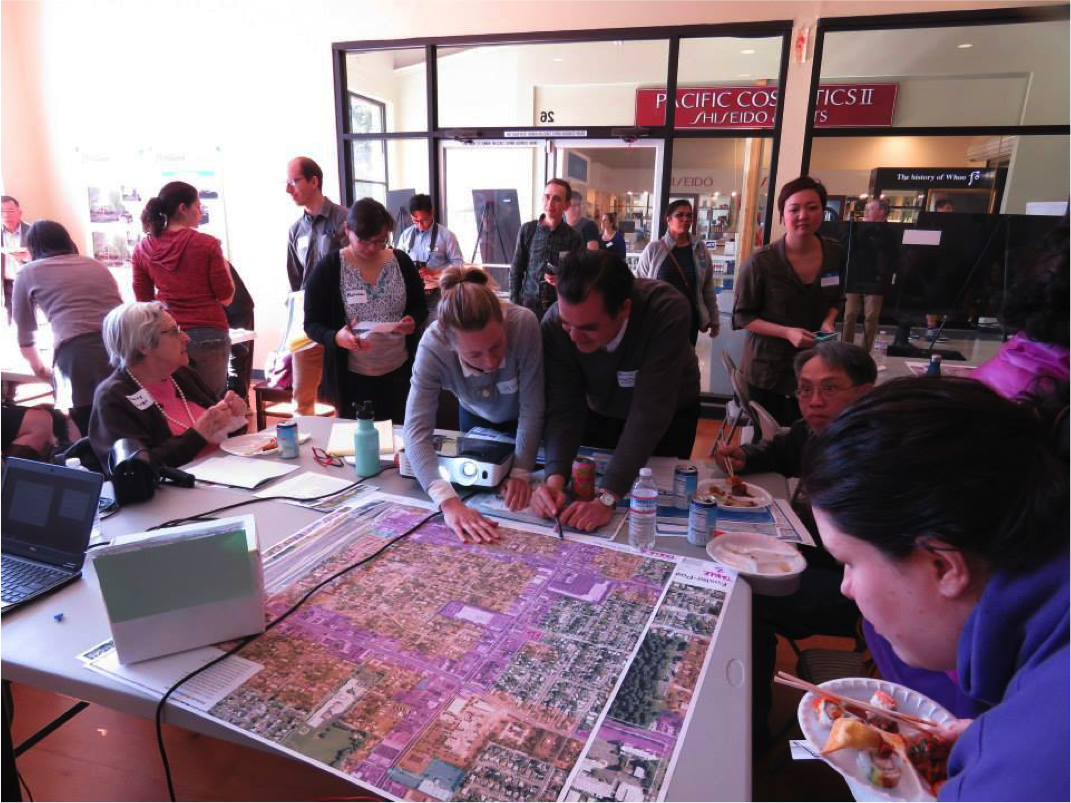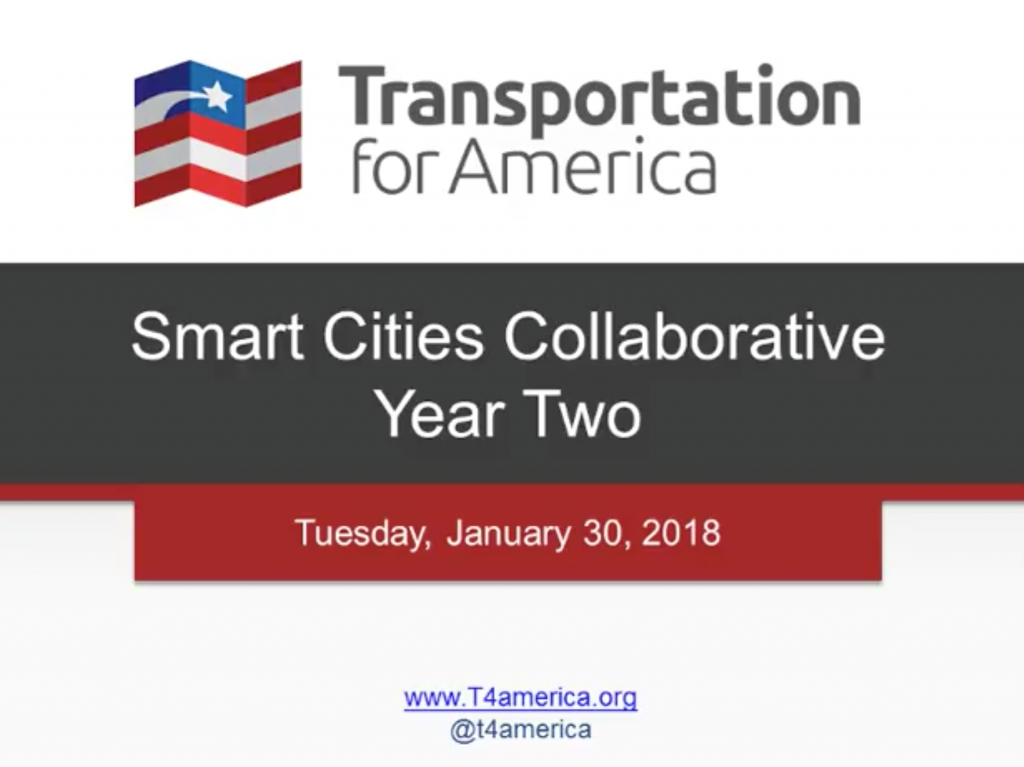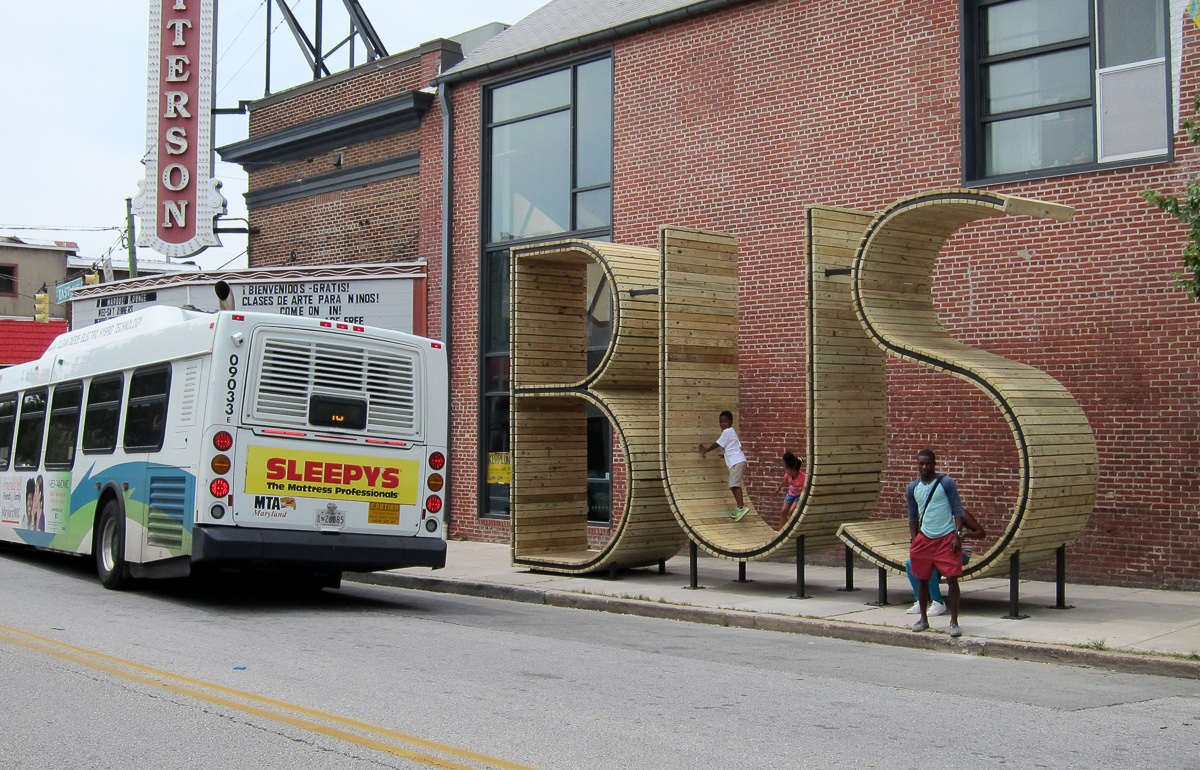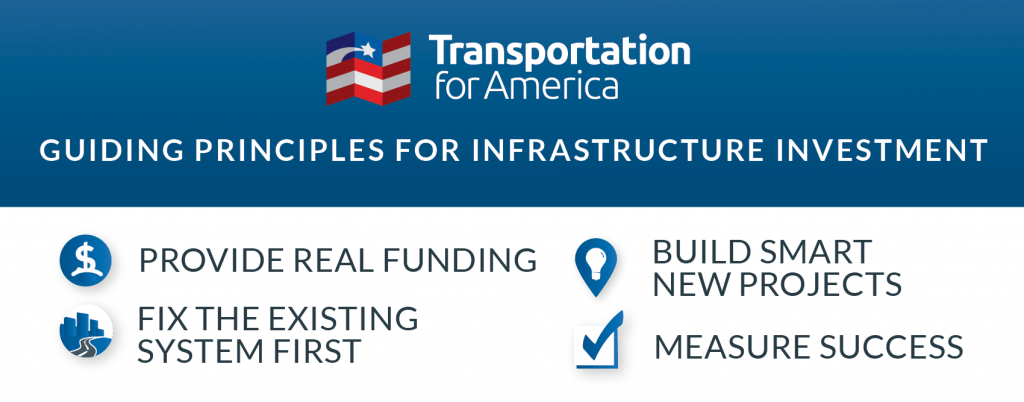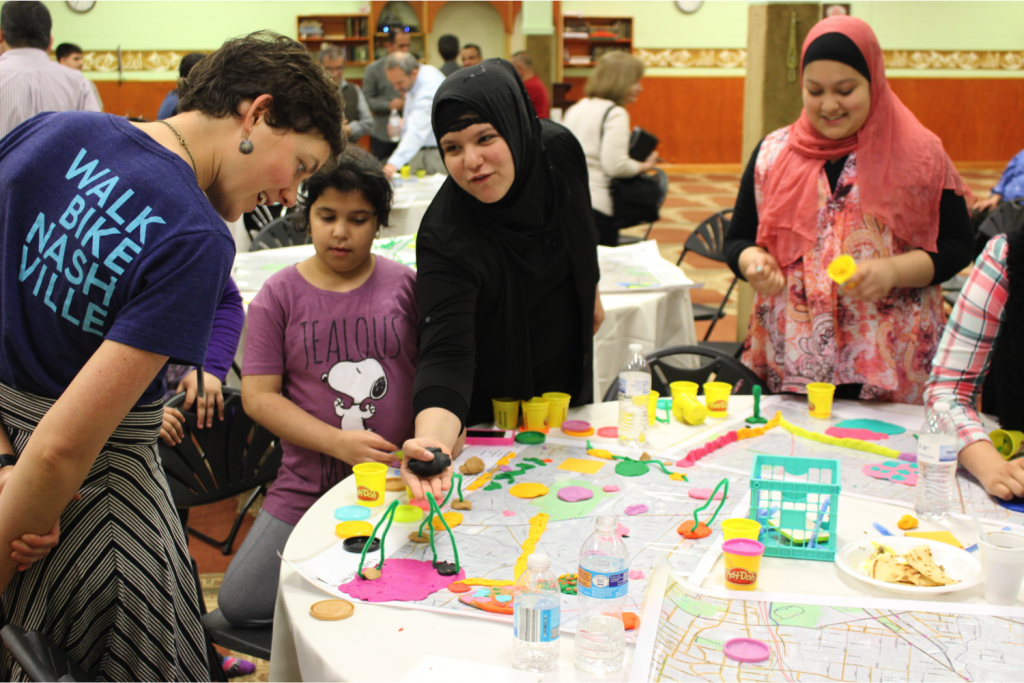As a valued member, Transportation for America is dedicated to providing you the latest information and developments around federal policy.
Tax Reform
Congress, in coordination with the White House, has been considering comprehensive tax reform, and the proposed bills could have large effects on transportation and infrastructure. The House passed their tax reform bill, H.R. 1 or the “Tax Cuts and Jobs Act” on November 16th by a vote of 227 to 205.
The House version of the Tax Cuts and Jobs Act repeals private activity bonds and eliminates the ability of employers to deduct the cost of providing transit benefits to employees. These proposals undermine efforts to rebuild our infrastructure and make it difficult to envision how the Administration can achieve its stated goal of creating a new $1 trillion infrastructure package.
On Saturday December 2nd, the Senate passed its version of the “Tax Cuts and Jobs Act” by a vote of 51 – 49. Senator Bob Corker (R-TN) was the only Republican to join all Democrats in opposing the bill. While deeply flawed, the Senate bill retains private activity bonds (PABs), which are a critical tool for financing investment in a variety of infrastructure projects.
President Trump has set an ambitious goal of signing tax reform legislation into law before Christmas. There are substantial differences between the Senate and House bills that will have to be bridged, including the disparate private activity bonds provision, if tax reform will become law. To do that, the House and Senate both voted this week to go to a Conference Committee to reconcile their differences and leaderships from both Houses have appointed their conferees.
The Senate Conferees are: Senators Orrin Hatch (R-UT), Mike Enzi (R-WY), Lisa Murkowski (R-AK), John Cornyn (R-TX), John Thune (R-SD), Rob Portman (R-OH), Tim Scott (R-SC), Pat Toomey (R-PA), Ron Wyden (D-OR), Bernie Sanders (I-VT), Patty Murray (D-WA), Maria Cantwell (D-WA), Debbie Stabenow (D-MI), Robert Menendez (D-NJ), Tom Carper (D-DE). The House Conferees are: Representatives Kevin Brady (R-TX), Devin Nunes (R-CA), Peter Roskam (R-IL), Diane Black (R-TN), Kristi Noem (R-SD), Rob Bishop (R-UT), Don Young (R-AK), Greg Walden (R-OR), John Shimkus (R-IL), Richard Neal (D-MA), Sander Levin (D-MI), Lloyd Doggett (D-TX), Raul Grijalva (D-AZ) and Kathy Castor (D-FL).
Impact of Tax Reform on Infrastructure
The “Statutory Pay As You Go Act,” of 2010 requires the Office of Management and Budget (OMB) to keep an annual debt scorecard and institute across-the-board spending reductions to a select group of mandatory programs to offset an increase in the debt in any calendar year. Congress can avoid these mandatory reductions by either cutting spending elsewhere or passing legislation to wipe the OMB scorecard. Each the House and Senate tax reform plans would add approximately $1.5 trillion to the debt over the next decade. Under the law, OMB would have to make $150 billion in mandatory spending cuts every year for the next 10 years, unless Congress takes additional action as described earlier. It is important to note that additional action to cut spending or wipe the scorecard would require 60 votes in the Senate, whereas the special rules – known as reconciliation – being used to pass tax reform only require 51 votes. $639 million in the highway trust fund used for the equity bonus program is considered mandatory spending and that $639 million would be subject to mandatory reductions.
It’s unclear if Congress will allow the mandatory reductions to take effect, as it would slash funding from a variety of programs including Medicare. Two possible scenarios are that Congress would either institute spending reductions in discretionary programs – such as TIGER, Capital Investment Grants (CIG), and others – or it will wipe the scorecard and allow for an increase in the debt. In the latter instance, it is likely that a future Congress will seek to cut spending to address the increased debt. This means that critical transportation programs are at risk as a result of the tax reform proposals under consideration. One way or the other, T4America is concerned that Congress may pay for these tax cuts by choosing to cut programs that reinvest in our country, including critical transportation programs like TIGER, CIG, and Amtrak.
Government Appropriations
Fiscal Year (FY18) Appropriations
The House and Senate approved legislation on Thursday, December 7th – one day before the deadline – to fund the federal government through December 22nd.
Funding was extended by two weeks in order to give the President and Congressional leaders more time to negotiate a full year appropriations package. The main sticking point is how much to raise the discretionary spending caps established by the Budget Control Act of 2011. Democrats want non-defense discretionary spending to be raised by the same amount as defense spending, while Republicans want to increase defense spending more than non-defense discretionary spending. Finally, other issues may need to be dealt with, including the inclusion of the Deferred Action for Childhood Arrivals (DACA) program and health care insurer payments to stabilize the Affordable Care Act.
House and Senate Appropriators are waiting for an agreement on the budget caps so they can finalize FY18 appropriations. An agreement allows each subcommittee to know how much they have to allocate to programs within their jurisdiction. At this stage, we expect that the spending caps will be raised. It is important to note that an increase in the budget cap will not guarantee full funding for key transportation programs like TIGER, CIG, and Amtrak.
Fiscal Year (FY19) Appropriations
One final thing to remember is that while Congress is finalizing FY18 appropriations, House and Senate Appropriators and the Administration are already starting the FY19 appropriations process. If you have FY19 funding or language requests, it’s important to start talking to your member of Congress and the Appropriations committees
Update on Senate Autonomous Vehicle Legislation
As you know, T4America has been working to improve the autonomous vehicle (AV) legislation that is working its way through Congress. The House passed their AV legislation, the SELF-DRIVE Act, in September. The Senate Commerce Committee has approved its bill, the American Vision for Safer Transportation through Advancement of Revolutionary Technologies Act” or the “AV START Act. We are particularly concerned about language that would preempt the enforcement of local laws as well as how the legislation would address data sharing, among other issues.
Last week, the full Senate began the process of advancing the AV START Act. Commerce Committee Chairman John Thune “hotlined” the Senate bill, a process by which the Chairman notifies Senators that he is seeking unanimous consent, and provides them with a final opportunity to object. Senators seeking further change to a bill will seek to address their concerns by objecting to passing legislation by unanimous consent.
T4America continues to have major concerns with the legislation. At least four Senators are known to have formally objected to passing the bill by unanimous consent: Senators Roger Wicker (R-MS), Richard Blumenthal (D-CT), Dianne Feinstein (D-CA) and Ed Markey (D-MA). We are working with Senators who share our concerns with regard to preemption and data sharing.
T4America and our partners have urged the Senate Commerce Committee to include data sharing requirements to provide states, municipalities, and law enforcement the real-time data necessary to ensure the safety of AVs in their communities. Such data would potentially cover areas like the number of crashes and disengagements an AV has had, the types of roads AVs have had problems on, and the weather conditions at the time of a crash or disengagement. Unfortunately, the Committee so far has declined to do so.
As a reminder, the Senate AV START Act (S. 1885) does a number of things including:
- Delineating the federal and state/local roles when it comes to regulating automated vehicles via a preemption clause;
- Establishing a specific exemption from federal motor vehicle safety standards to test automated vehicles;
- Raising the number of safety exemptions a manufacturer can get to test vehicles to 80,000 over three years; and
- Establishing an automated vehicle advisory committee to advise the Secretary of U.S. Department of Transportation on a number of issues related to automated vehicles.
Click here for more about T4America’s concerns with the AV START Act.
Chairman Thune has stated his desire to approve AV legislation quickly. If the Committee is unable to satisfy the Senators, the Committee would have to pursue other ways for approving legislation. This would likely include attaching the legislation to another bill that is advancing through the Senate.
